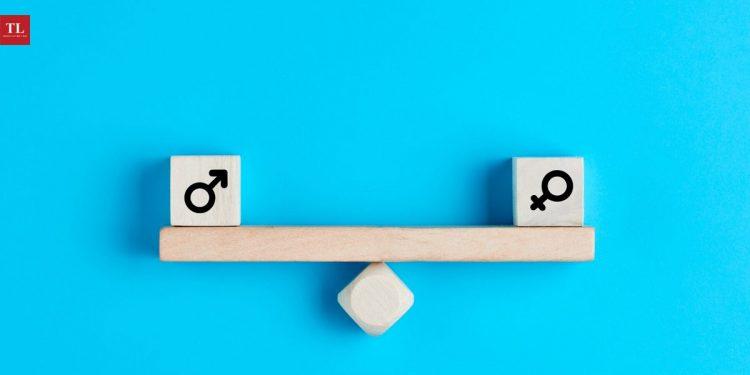Making Gender Equality At Work A Justiciable Right For Women In The Private Sector

Referring to landmark Supreme Court judgments from India and the United States, N. KAVITHA RAMESHWAR makes the case for robust overarching legislation dedicated to tackling discrimination against women at the workplace on the basis of their gender, especially in the private sector.
—-
The earliest rejection of the “separate spheres” theory is found in 375 BCE by the Athenian philosopher Plato in his book ‘Republic’. The book is also the source of the cherished principle of equality, with specific reference to equality of opportunity for women in modern civilization.
Plato was the first to formulate the principle that discriminatory treatment can only be justified if a relevant difference is found. The principle is now accepted by the superior courts in India and around the world.
Right to work – a cherished human right
It is an internationally accepted principle that everyone has the right to work, to free choice of employment, just and favourable conditions of work, and to protection against unemployment. As a signatory to the Convention on the Elimination of All Forms of Discrimination Against Women (CEDAW), which is an international Bill of Rights for Women that has been ratified by 186 nation-states, India is internationally obligated to enshrine gender equality into its domestic legislation, repeal all discriminatory provisions in its laws, and enact new provisions to guard against discrimination against women.
Article 11 of the Convention outlines the right to work for women as an unalienable right of all human beings. It mandates equal pay for equal work, and the right to social security, paid leave and maternity leave “with pay or with comparable social benefits without loss of former employment, seniority or social allowances”. Dismissal on the grounds of maternity, pregnancy status of marriage are also prohibited.
The Constitutional Guarantee of equality of opportunity in work
The Indian Constitution, with its specific reference to equality in all aspects of employment and work, bestows on the Indian State the constitutional responsibility of ensuring equality to women in all aspects of public employment, from appointment to equal pay, promotion, maternity benefit and equality in treatment as an employee.
The constitutional courts have adopted a progressive and transformative approach to making the equality jurisprudence with reference to women’s right to work more expansive and inclusive, in tandem with the principles of justice, equality and dignity enshrined in the Preamble of the Indian Constitution. However, there seems to be an unmistakable void in the statutory field to ensure equality of opportunity to women in employment, in the private sector.
Men only – The Iron Curtain
One of the foremost factors in the sheer gender disparity in the Indian workforce, both private and public, is that they are restricted from entry at the very threshold. Many categories of jobs are reserved for men only.
As emphatically held by the Supreme Court in its recent judgment in the case of Union of India & Ors. vs. Lt Cdr Annie Nagaraja & Ors. (2020 SCC OnLine SC 326):
“The battle for gender equality is about confronting the battles of the mind. History is replete with examples where women have been denied their just entitlements under law and the right to fair and equal treatment in the workplace. … A level playing field ensures that women have the opportunity to overcome their histories of discrimination with the shortest of responses based on their competence, ability and performance.”
Also read: The ‘gender wage gap’ | Part II: What the law has to say
The norm of Unequal pay for equal work
While the world has heard the principle ‘equal pay for equal work’ ad nauseam, stark inequality in the pay of women for the same or equal work done by men is an unfortunate reality.
In India, though this principle has been enshrined in Article 39(d) of the Constitution, the principle got its due recognition only in the year 1987 through the Supreme Court’s judgment in Mackinnon Mackenzie & Co. Ltd. vs. Audrey D’Costa & Anr. (AIR 1987 SC 1281), in which the apex court allowed the claim for equal remuneration for lady stenographers at par with male stenographers. The fact that the ‘equal pay’ rule has been observed more in its breach hardly needs any retelling, and citing of instances in this regard would be carrying coals to Newcastle.
The U.S. Supreme Court judgment in Ledbetter v. Goodyear Tire & Rubber Co., 550 U.S. 618 (2007) is a leading case in point. In its ruling, the U.S. Supreme Court rejected the complainant’s appeal over employment discrimination and stated that “she could have, and should have, sued” when the allegedly discriminatory pay decisions were made, instead of waiting beyond the 180-day statutory charging period.
The facts of this case demonstrate that unequal pay on the basis of gender has been so institutionalised that women are often silent spectators of their own state, and it takes them quite some time to understand the degree of unequal treatment meted out to them and to stand up for their own rights.
Discrimination faced by pregnant women
Instances of invidious discrimination at work during the period of pregnancy are often a stumbling block in every woman’s career. In India, there is an absence of any legal framework to protect women from discrimination that arises out of pregnancy unlike the U.S., where there is a specific law that deals with such kind of discrimination, viz. the Pregnancy Discrimination Act of 1978.
An absence of any statutory right to non-discrimination to protect female employees, especially those in the private sector, fills one with a sense of foreboding as these employees, due to the lack of any specific legal remedy available to them to fight such discrimination, are prone to exploitation and discrimination from their employers.
Motherhood blues
The discrimination that accompanies motherhood at the workplace is even more startling.
The Maternity Benefit Act, 1961, after a 2017 Amendment, provides guaranteed paid leave of 26 weeks to pregnant women, as opposed to the earlier 12 weeks. The legislation is clearly applicable to the private sector and is seen as progressive legislation for the welfare of women, but the new extended paid leave is discouraging private employers from engaging the services of women who are in the reproductive age bracket.
While women have often reported working with the same or heightened sense of sincerity after childbirth, they are still not taken as seriously as their male colleagues. This blatant bias is reflected in the work responsibilities given to them. Legal scholars, as well as social scientists, have referred to a ‘maternal wall’ obstructing working mothers’ paths long before they bump against the famed ‘glass ceiling’.
The Paradox of Identities
One of the most famous judgments relating to sexual discrimination at the workplace is that of the U.S. Supreme Court in Price Waterhouse vs. Hopkins, 490 U.S. 228 (1989) where the petitioner, a senior manager at an accounting firm was denied partnership despite having high competence as borne out by the records. The Court came to her rescue, holding:
“An employer who objects to aggressiveness in women but whose positions require this trait places women in an intolerable and impermissible Catch-22: out of a job if they behave aggressively and out of a job if they do not. Title VII [of the Civil Rights Act of 1964] lifts women out of this bind.” Such situations are universally found, and women are torn between differing expectations.
This perplexing paradox is reminiscent of Portia, a character in English playwright William Shakespeare’s play ‘The Merchant of Venice’. Portia displays fierce autonomy and an astonishing sense of self, yet she had to don a cloak of masculinity in order to speak in a courtroom in order to be taken seriously, as the Venetian court system during that time did not allow female lawyers.
These factors point to a clear necessity for a remedy and a forum to agitate on issues of discrimination faced by women in employment, especially in the private sector, which is totally unregulated with respect to the way it ought to treat women in matters of employment.
While there are several important legislations in place like the Sexual Harassment at Workplace (Prevention, Prohibition and Redressal) Act, 2013, the Equal Remuneration Act, 1976 and the Maternity Benefits Act, 1961 which address specific problems faced by women, there is a clear chasm of legislation that can lend a voice to the entire gamut of challenges faced by women at the workplace.
From breaking the ‘glass ceiling’ to making an ‘even floor’
Any statute that guarantees non-discrimination and equality of opportunity to women at the workplace must clearly spell out three essential mandates:
- What is discrimination?
- What kinds of discrimination are illegal?
- How can it be remedied and penalized?
The substantive and the procedural provisions will fall in line with the basis of this skeletal idea at its core. A quasi-judicial body, as well as an administrative setup that gives teeth to the substantive provisions, would be legally imperative to the fulfilment of the goal of such legislation.
It is also important to bolster the remedial provisions with express protection against possible retaliation and penalization by the employer in case of complaints made.
The legislation may consider setting up an Equal Employment Opportunity Commission as a remedial statutory forum of the first instance to deal with all complaints of working women in the private sector.
Also read: The working women’s manifesto demands government accountability
Empowering the ‘guardians’ in our Republic
Foundational legislation that undergirds anti-discriminatory laws while empowering the statutory bodies to handle specific kinds of discrimination is the need of the day that cannot brook further delay. The formulation of such domestic legislation would fulfill the promise tendered by India to the international community under CEDAW, and would also lend meaning to women’s avowed right to work. This, in turn, would empower them and elevate their position to being equal stakeholders and ‘guardians’ of society, as visualized by Plato in his ‘Republic’.
(N. Kavitha Rameshwar is an Advocate at the Madras High Court. The views expressed are personal.)
The article was originally published in The Leaflet.
Get the latest reports & analysis with people's perspective on Protests, movements & deep analytical videos, discussions of the current affairs in your Telegram app. Subscribe to NewsClick's Telegram channel & get Real-Time updates on stories, as they get published on our website.
























